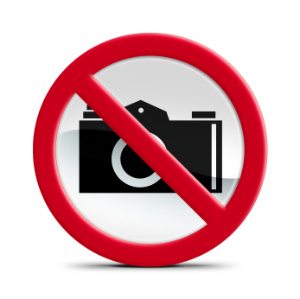Information contained in this publication is intended for informational purposes only and does not constitute legal advice or opinion, nor is it a substitute for the professional judgment of an attorney.
 When the photographs and videos flooding social media include images of patients or the victims of an accident or crime, it gives human resources professionals, compliance officers and in-house employment counsel at health care facilities heartburn and forces them to spring into action. In the past several years, dozens of snap-happy health care workers have been fired for using smartphones to photograph patients and then upload the images to their social media page. One startling illustration of this phenomenon occurred when emergency room workers and staff at a medical center in California photographed an urgent care patient’s gruesome stab wounds and posted the photos on the web. In another example, an Oregon nursing assistant received an eight-day prison sentence after posting graphic photographs of nursing home residents on her social media site. Given these types of stories, it is not surprising that, according to a PricewaterhouseCoopers study published in April 2012, 63% of health care consumers expressed concern about personal health information being shared in public.
When the photographs and videos flooding social media include images of patients or the victims of an accident or crime, it gives human resources professionals, compliance officers and in-house employment counsel at health care facilities heartburn and forces them to spring into action. In the past several years, dozens of snap-happy health care workers have been fired for using smartphones to photograph patients and then upload the images to their social media page. One startling illustration of this phenomenon occurred when emergency room workers and staff at a medical center in California photographed an urgent care patient’s gruesome stab wounds and posted the photos on the web. In another example, an Oregon nursing assistant received an eight-day prison sentence after posting graphic photographs of nursing home residents on her social media site. Given these types of stories, it is not surprising that, according to a PricewaterhouseCoopers study published in April 2012, 63% of health care consumers expressed concern about personal health information being shared in public.
Many health care workers mistakenly believe that posting a patient’s image on a social media site does not violate HIPAA’s privacy requirements if the post excludes the patient’s name and other identifying information. To the contrary, an image that includes a patient’s face is not de-identified under HIPAA. Even when the face is obscured, the image still could be entitled to protection under HIPAA if the patient reasonably could be identified, for example, where the image reveals a distinguishing tattoo or scar.
Beyond the privacy issues, snap-happy health care workers undermine patient perceptions of a provider’s quality of care. Patients are left to ask themselves why health care workers are taking pictures when they should be providing care. These unauthorized photo shoots also show a fundamental disrespect for the patient, creating the impression that patients are being used for the health care workers’ entertainment.
On August 8, 2012, New Jersey took a step towards addressing this problem by criminalizing unauthorized photo shoots at emergency and accident scenes. Under the new law, first responders are prohibited from taking pictures or video of victims and from disclosing such images without the victim’s consent. First responders covered by the new law include: law enforcement officers; paid or volunteer firefighters; paid or volunteer members of a duly incorporated first aid, emergency, ambulance, or rescue squad association; or any other individual who, in the course of their employment, is dispatched to the scene of an accident or emergency to provide medical care or other assistance. The new law’s broad definition of “disclose” covers, among other actions, the posting of an image on the Internet. Underscoring the importance of establishing workplace policies on the issue, the new law allows first responders to take images at emergency scenes in accordance with their employers’ rules, regulations, or operating procedures.
Violation of the New Jersey law is classified as a disorderly conduct offense. In addition, a person whose image is unlawfully taken or disclosed can recover from the first responder minimum liquidated damages of $1,000 per violation or actual damages, whichever is greater, as well as punitive damages and reasonable attorneys’ fees. These remedies are in addition to any other right of action or recovery that may be available under New Jersey law.
While the New Jersey law does not apply to most health care workers, it highlights the public indignation over a practice that reflects poorly on all health care providers. Even health care employers outside of New Jersey and without employees who fall within the new law’s definition of “first responder” should confirm that their policies adequately restrict employees from posting images of patients on the Internet. One such policy provision could be to prohibit employees from using a personal cell phone, smartphone, tablet or camera to take or post any photographs or video recordings of patients to the Internet.
Image credit: Pablo del Rio


